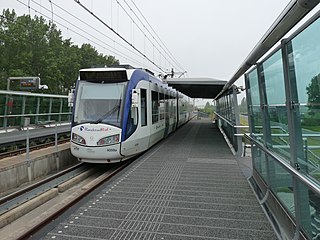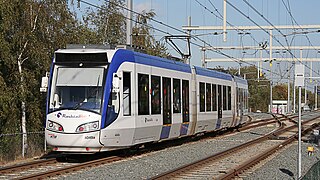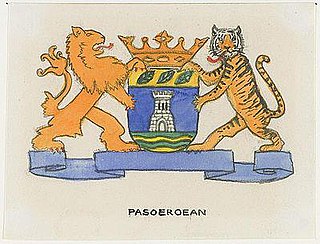
Hook of Holland is a town in the southwestern corner of Holland, hence the name; hoek means "corner" and was the word in use before the word kaap – "cape", from Portuguese cabo – became Dutch. The English translation using Hook is a false cognate of the Dutch Hoek, but has become commonplace. It is located at the mouth of the New Waterway shipping canal into the North Sea. The town is administered as a district of the municipality of Rotterdam. Its district covers an area of 16.7 km2, of which 13.92 km2 is land. On 1 January 1999 it had an estimated population of 9,400.

The Netherlands is both a very densely populated and a highly developed country in which transport is a key factor of the economy. Correspondingly it has a very dense and modern infrastructure, facilitating transport with road, rail, air and water networks. In its Global Competitiveness Report for 2014-2015, the World Economic Forum ranked the Dutch transport infrastructure fourth in the world.

Westland is a municipality in the western Netherlands, in the province of South Holland. It covers an area of 90.74 km2 (35.03 sq mi) of which 9.47 km2 (3.66 sq mi) is covered by water and had a population of 111,382 in 2021.

Nederlandse Spoorwegen is the principal passenger railway operator in the Netherlands. It is a Dutch state-owned company founded in 1938. The Dutch rail network is the busiest in the European Union, and the third busiest in the world after Switzerland and Japan.

HTM Personenvervoer NV is a public transport company in the Netherlands operating trams, lightrail and buses in The Hague, Rijswijk, Leidschendam, Voorburg, Delft, Zoetermeer, Wateringen, Pijnacker and Nootdorp, the so-called Conurbation Haaglanden. The lightrail connection to Zoetermeer is operated in cooperation with RET, the Rotterdam-public transport company, which operates the connection between The Hague Central Station and Slinge in the south of Rotterdam, thus giving a fast and easy connection between the two city-centres. Regional transports are serviced by Connexxion, Arriva and RET.

Amsterdam Zuid is a railway station situated in the borough of Amsterdam-Zuid in Amsterdam, Netherlands. For a number of years, it was named Amsterdam Zuid WTC, in reference to the neighbouring World Trade Center Amsterdam. During 2006, in conjunction with the rapid development of the area surrounding the station, the station was enlarged and the reference to the WTC was formally dropped from the name.

RandstadRail is a tram-train network in the Rotterdam–The Hague metropolitan area in the west of the Netherlands that is jointly operated by HTM Personenvervoer (HTM) and Rotterdamse Elektrische Tram (RET). It connects the cities of Rotterdam, The Hague and Zoetermeer, primarily using former train and existing tram tracks.

Den Haag Centraal is the largest railway station in the city of The Hague in South Holland, Netherlands, and with twelve tracks, the largest terminal station in the Netherlands. The railway station opened in 1973, adjacent to its predecessor: Den Haag Staatsspoor, which was subsequently demolished. It is the western terminus of the Gouda–Den Haag railway.

Rail transport in the Netherlands uses a dense railway network which connects nearly all major towns and cities. There are as many train stations as there are municipalities in the Netherlands. The network totals 3,223 route km (2,003 mi) on 6,830 kilometres (4,240 mi) of track; a line may run both ways, or two lines may run on major routes. Three-quarters of the lines have been electrified.

Loosduinen is a former village in the Netherlands that was a municipality unto itself until 1923, when it was annexed by The Hague and subsequently became a district of the city.

Delft is the main railway station of the city of Delft, South Holland, Netherlands. It is located on the oldest railway line in the country, between the stations of The Hague Central and Rotterdam Central. Along with a new 2.3 km rail tunnel under the city centre, the current station opened on 28 February 2015. The new building, which integrates the station hall with the city's municipal offices, was designed by Mecanoo, an international architecture firm that originated in Delft. The project also included a rebuilt bus station, tram stops and improved bicycle parking.

Den Haag HS, an abbreviation of the original name Den Haag Hollands Spoor, is the oldest train station in The Hague, South Holland, Netherlands, located on the Amsterdam–Haarlem–Rotterdam railway. It is the second main station in The Hague and, unlike The Hague Central Station, it is not a terminus station. The name of the station is derived from the former Hollandsche IJzeren Spoorweg-Maatschappij (HIJSM) which was the first Dutch railway company.

Rotterdam Centraal station is the main railway station of the city Rotterdam in South Holland, Netherlands. The station received an average of 112,000 passengers daily in 2019. The current station building, located at Station Square, was officially opened in March 2014.

Schiedam Centrum is a railway station and metro station in Schiedam, just to the west of Rotterdam, Netherlands, on the railway line between The Hague and Rotterdam Centraal. Train services are operated by Nederlandse Spoorwegen, and metro, tram and bus services are operated by Rotterdamse Elektrische Tram.
The main public transport in the Netherlands for longer distances is by train. Long-distance buses are limited to a few missing railway connections. Regional and local public transport is by bus and in some cities by metro and tram. There are also ferries.

The Hague Tram is a tram network forming part of the public transport system in and around the city of The Hague in South Holland, Netherlands.

Hoek van Holland Strand station was the terminus of the Hoekse Lijn until 1 April 2017.

The Madoera Stoomtram Maatschappij on Madura Island today's Indonesian province of Jawa Timur was one of the railway companies in the Dutch East Indies. The company had its headquarters in The Hague and was licensed in 1896. In 1901 it put the first steam trams in operation to connect the western with the eastern end of the island.

Houtwijk is a neighbourhood of The Hague, located in the Loosduinen district, with more than 5,000 homes. Houtwijk mainly contains a lot of new constructions that were built both in and after the 1970s and 1980s. There are also both many owner-occupied and rental properties. While officially a neighbourhood of Loosduinen, some residents consider it its own subdistrict. This is mainly because its name contains wijk which translates to "district".

The Pasoeroean Stoomtram Maatschappij, N.V. was a private tramway in Pasuruan on the Dutch East Indies. It served passenger transport as well as goods transport of agricultural products such as sugarcane, tea and tobacco.
























